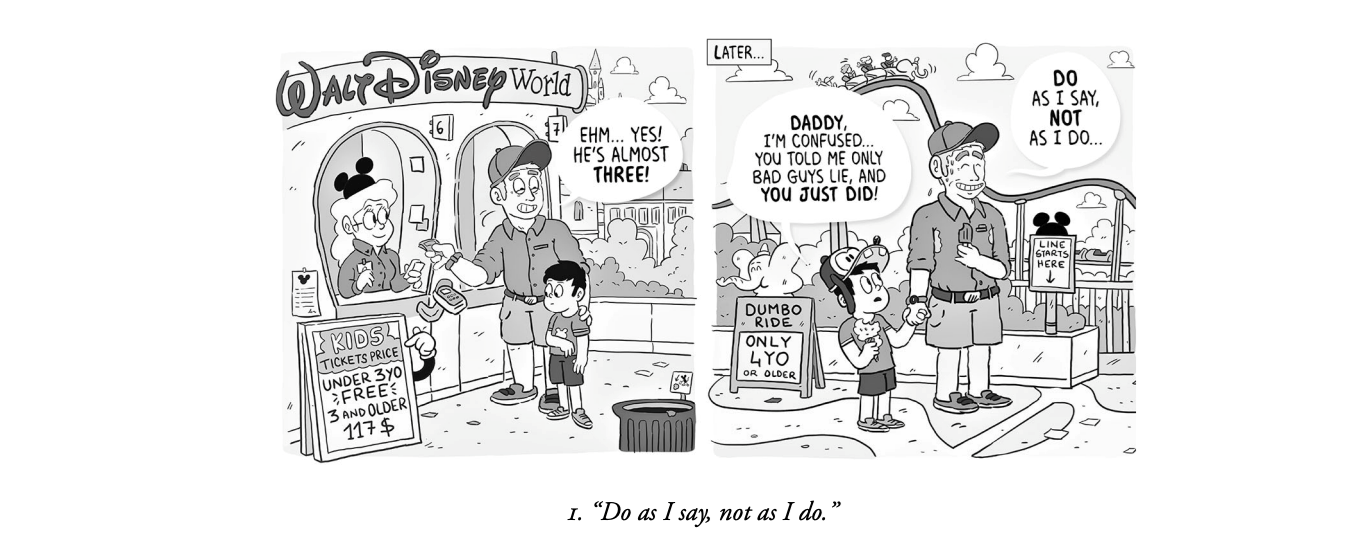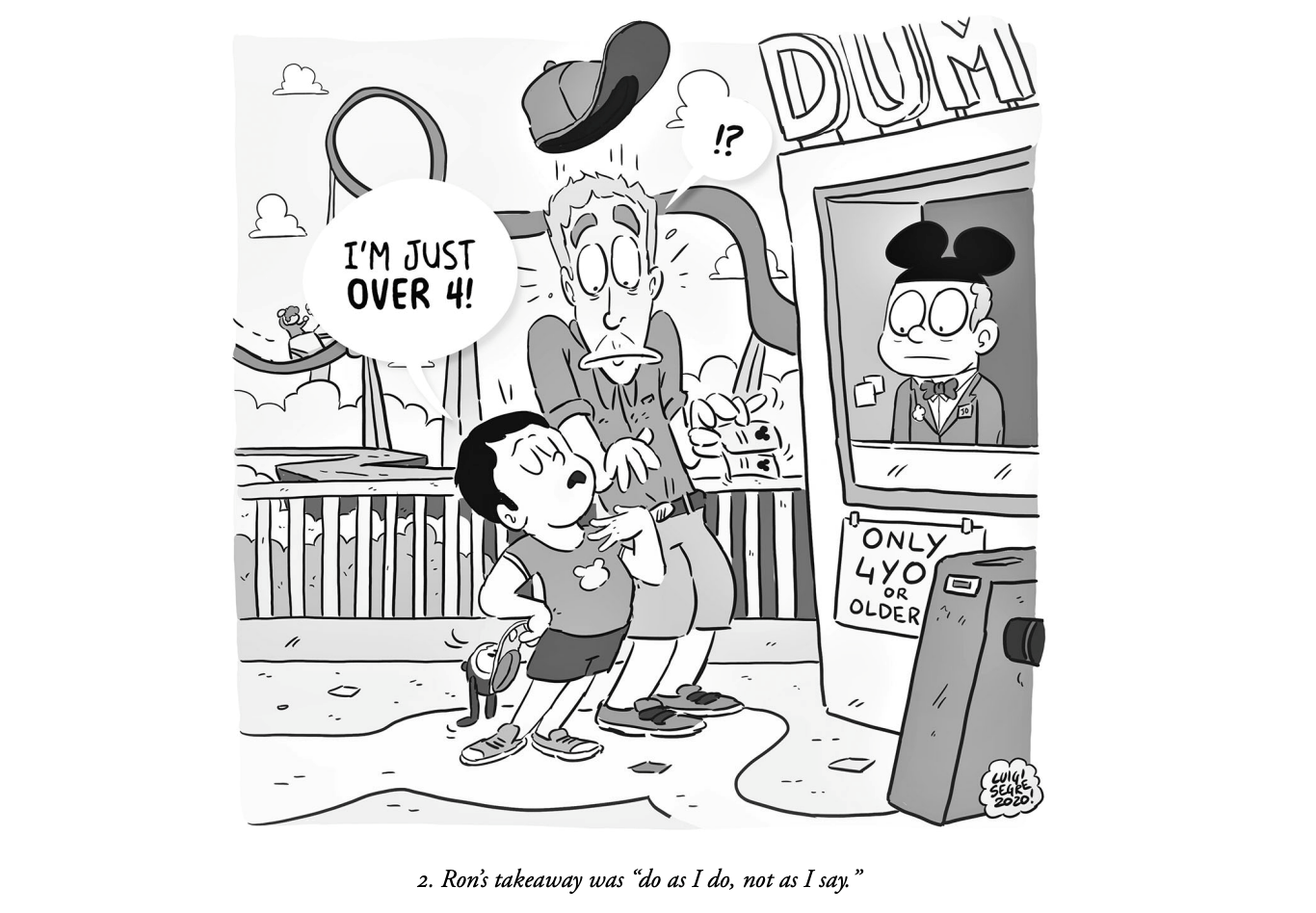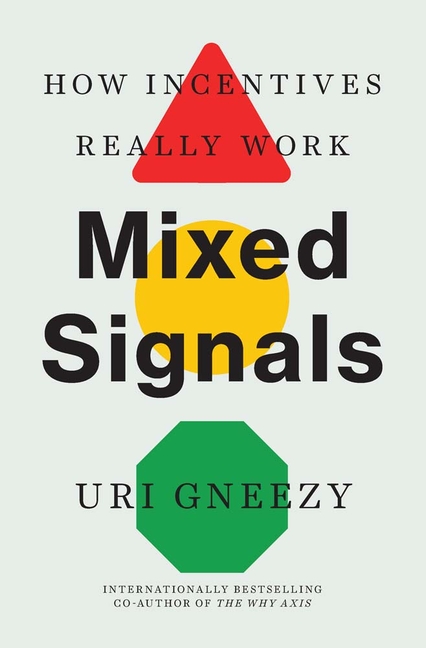Mixed Signals | An Excerpt from the Marketing & Communications/Sales & Influence Category
December 21, 2023
An informative and entertaining account of how actions send signals that shape behaviors and how to design better incentives for better results in our life, our work, and our world.
Uri Gneezy’s Mixed Signals is a book that could easily have landed in a category dedicated to leadership, or management, or even to human behavior. Because it is how to use incentives to shape others’ behavior, we placed it comfortably in our category dedicated to communication and influence. But to be clear, this book will be as useful to the CEO of a company as the CMO, to those in management and human resources as it is to those in the sales force. It is equally applicable when looking inward as it is to reaching out. Indeed, it offers an insightful and entertaining look at how human behavior is shaped whether you are in business or not. I really can’t think of anyone who would not benefit from what it teaches. To bring that point closer to home, the following excerpt—from the book’s Introduction—offers a story most parents will relate to about how we teach our children

I loved it when my son Ron reached the age when he started effectively communicating with us. Like other kids, he also started to experiment with lying. We told him he shouldn’t lie—being honest is what separates the good guys from the bad guys. This moral lesson soon got me into trouble.
All was good until I took him to Disney World on a nice day in July. We waited in line to purchase tickets, and I saw the sign that said, “Under three years old: Free. Three and older: $117.” When it was our time to pay, the smiling cashier asked me how old Ron is, and I replied, “Almost three.” Technically I wasn’t lying: he was almost three, but from the wrong side; his third birthday was a couple of months earlier. I paid for myself while the cashier kept smiling, and we went in to have fun.
What happened at the ticket booth and about half an hour later is shown in figure 1.

When Ron said, “Daddy, I’m confused. You told me only bad guys lie, and you just did!” I tried the “do as I say, not as I do” approach, but I don’t think it worked.
Before you judge my moral standards, it turns out that I’m not the only one who “rounds down” the age of their kids. An article on Vacationkids. com titled “Do You Lie about Your Kids to Get Family Vacation Deals?” reports that this question had been searched over two billion times (with a b) on Google! According to Google, I’m not alone.
Ron received two contradicting signals from me: what I said versus what I did in the face of a $117 incentive. In a nutshell, this book is about how to avoid such mixed signals: you say one thing, but when the incentives present themselves, you do something else.
What should Ron conclude regarding what I care about? What is the message that Ron heard? What happened when we approached the next ride is shown in figure 2.

The key is to understand that incentives send signals. Too often there’s a conflict between what you say and what your incentives signal. You can tell everyone that you care about honesty; talk is cheap. For the claim to be credible, you need to back it up by taking actions that are costly to you, such as paying the full entrance fee. If you’ll align what you say with the incentives you off er, the signal will be credible and easy to understand.
When you understand signals, you learn how to make incentives more effective. For example, what could Disney do to reduce the number of people lying about age? A simple option is to make people bring documentation, such as a birth certificate, to prove the age of their kids. That’s probably a bad idea because you go to Disney World to be part of a big happy family, not to be policed. While requiring documentation would probably reduce the number of people lying, it would also create a lot of hassle and negative emotions.
Take a minute to think about a solution.
Here’s a solution that is based on signals: Disney could ask that the child be present when you buy the ticket. This would force you to face a mixed signal dilemma like I did: Am I going to lie in front of my kid or pay $117? Disney can even take it a step further and ask the child to tell their own age, for example, by answering the question, “Did you already have your third birthday?” You can clearly coach your child to lie to the cashier, but boy, that is one strong and costly signal that lying is acceptable.
There are many examples of incentives that send a confusing mixed signal, resulting in a different outcome than intended. As you will see in the pages ahead, even big companies often make such mistakes when designing their incentives.
Imagine a CEO who tells her employees how important it is to work as a team, but the incentives she designs for success are based on an individual’s work. The result is simple: the employees would ignore what the CEO says and try to maximize their individual success and monetary gain, as they understand it from the incentives. You may conclude that to avoid such mixed signals, CEOs shouldn’t use incentives at all. This book examines both perspectives and explores the middle ground that optimally shapes the incentives so that they are aligned with the intended messages and avoid mixed signals.
Examples of such mixed signals include the following:
- Encouraging teamwork but incentivizing individual success
- Encouraging long-term goals but incentivizing short-term success
- Inspiring innovation and risk-taking but punishing failure
- Emphasizing the importance of quality but paying for quantity
My goal is to show you how to be incentive smart—how to avoid these mixed signals and design incentives that are simple, effective, and ethical.
Excerpted from Mixed Signals: How Incentives Really Work.
Reprinted by permission of Yale University Press.
Copyright © 2023 by Uri Gneezy.
All rights reserved.









